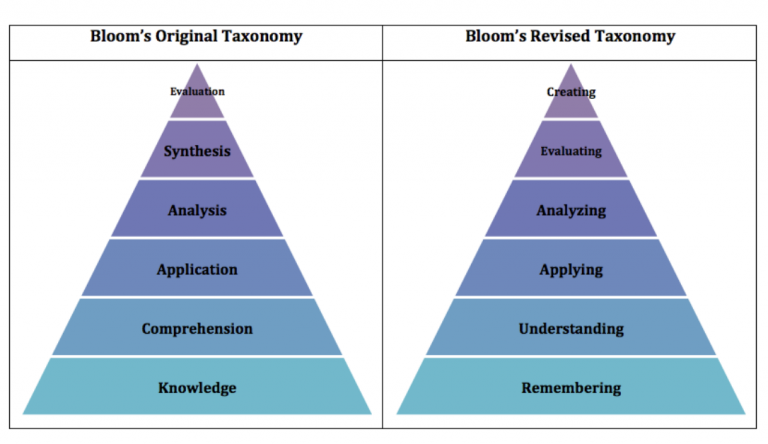AT 65, BLOOM’S TAXONOMY IS READY FOR RETIREMENT
It’s time to retire Bloom’s taxonomy. Originally published in 1956, before personal computers, the internet and smart phones — not to mention a contemporary understanding of the neuroscience of learning — it is not only outmoded, but in fact has never had any scientific backing or validity. Bloom’s Taxonomy was originally intended to classify thinking according to six cognitive levels of complexity. It has since become a ubiquitous tool for developing learning objectives, assessments, and curriculum. The main feature is a hierarchy of verbs that has encouraged the presumption that there is an all-purpose ladder of increasing learning difficulty that applies universally, regardless of the task, the age of the learner, or the purpose and context of the learning. And though it is often stretched to apply to vocational and technical education, it does not include anything outside the cognitive realm.
ATTEMPTS TO REWORK THE TAXONOMY
The taxonomy has been worked and reworked with “remembering” in place of “knowledge” (2001) and “creating” in the place of “evaluation.” There have also been valiant attempts to retrofit it for the digital era.

But no matter what we do with it, the problem remains the same. “Difficulty” depends on an almost infinite host of factors, including learners’ existing skill levels, maturity, prior education and experience, familiarity with the subject, interest in the subject, modality, context for the learning, quality of the curriculum and skill of the instructor — not to mention the interaction of all those factors.
IS COGNITIVE DIFFICULTY THE RIGHT FOCUS?
But is “cognitive difficulty” even the right focus in the first place? For instructional designers and faculty, the most important question is not relative “difficulty,” but the specific goals of the learning experience, whether it is a project, a course or a credential. Once those goals have been defined, then instructional designers and faculty can work backwards to ask the harder but much more essential questions: how best to support students in reaching those learning goals. Anyone who has actually worked with learners knows the process of learning is rarely linear. Nor should it be. The comforting hierarchy of the taxonomy completely ignores the fact that in the real world, we continually switch among cognitive –and noncognitive — tasks, applying, integrating, adding to and challenging what we know and can do.
TIME FOR RETIREMENT
Let’s retire Bloom’s taxonomy, once and for all. It is to good curriculum as a thesaurus is to good writing — rarely helpful and often counterproductive. There is no one-size-fits-all substitute for thoughtful learning design, driven by experience, expertise and an unwavering focus on real learners and what they really need to know and be able to do.


Leave a reply